- Home
- Stephen Baxter
The Science of Avatar
The Science of Avatar Read online
orbitbooks.net
orbitshortfiction.com
Begin Reading
Table of Contents
Photo Insert
Copyright Page
In accordance with the U.S. Copyright Act of 1976, the scanning, uploading, and electronic sharing of any part of this book without the permission of the publisher constitute unlawful piracy and theft of the author’s intellectual property. If you would like to use material from the book (other than for review purposes), prior written permission must be obtained by contacting the publisher at [email protected]. Thank you for your support of the author’s rights.
PROLOGUE
“What lab experience do you have?”
“I dissected a frog once.”
—Dr. Grace Augustine and Jake Sully
This book is about the science behind James Cameron’s movie Avatar. And to explore that science we’ll access behind-the-scenes secrets of James Cameron and his team.
But an awful lot of the science in Avatar is right up there on the movie screen. All you have to do is observe it.
Imagine it’s the year 2154, and you’re on Pandora, moon of the gas giant Polyphemus, planet of Alpha Centauri. You are following combat veteran Jake Sully down the ramp from the Valkyrie shuttle that has just brought you down from the orbiting starship Venture Star. You are at Hell’s Gate, the main operating base of RDA—the Resources Development Administration—which is here to mine this world for the supremely valuable “unobtanium.” Jake, though, is to report to Dr. Grace Augustine, to take part in the “avatar” programme she heads: his mind will drive a surrogate body intended to make contact with the Na’vi, natives of this world.
But you’re not thinking about any of this just now. You’ve just arrived, on an alien world. What do you see? What can you hear, smell, feel?
Actually, as you have your exopack mask glued to your face, all you can smell is canned air. Perhaps the sky is an odd colour, due to Pandora’s subtly different mix of atmospheric gases. Maybe there are funny-shaped clouds. You could hardly miss the two suns of Alpha Centauri, and that big old Jupiter-like world hanging in the sky. You might see little of Pandora’s native life, which has been pretty much excluded from Hell’s Gate.
You notice an odd feeling of lightness: a bounce in your step, a feeling that your head is full, like having a cold, a peculiar looseness in your internal organs. If you’ve trained on the smaller worlds of the solar system, the moon and Mars, you recognise these sensations; it was similar there. What you’re feeling is Pandora’s low gravity.
But then a huge mining truck roars past—and, with Jake, you see arrows sticking out of a tyre.
This is Jake’s very first observation of the Na’vi, the natives of Pandora. And this alone tells him, and you, a great deal about them.
To begin with, the Na’vi must be smart, with cognitive skills at least similar to modern humans’. Even an arrow—with a shaft, a head, some kind of flight—is a multi-part tool. On Earth, only humans have ever made such things, as far as we know, not the chimps, none of our hominid forebears with their chipped stone tools. Another proof of smartness is the fact that the Na’vi evidently targeted the tyres, which look like the vehicle’s weak point.
But how did the arrows get there? You already know that the Na’vi have a roughly humanoid form. You saw avatar bodies being grown in tanks aboard the starship from Earth. And given that, you might speculate (correctly) that a bow was used to fire those arrows. But you’re on another planet. How likely is it that an alien life form would develop a bow-and-arrow technology?
Well, on Earth, bow-and-arrow technology was independently invented several times. It seems to have emerged first by 8000 B.C. in Germany, but was separately developed by North American natives, who had no contact with the Old World between around 11,000 B.C. and the arrival of Columbus. The isolation of the continents has provided us with natural laboratories to study cultural evolution. Many things were invented independently, such as farming, wherever the local resources made them possible. Archery is one of these—although it didn’t always occur. The Aborigines of Australia never developed it; instead they used a throwing stick, like the South American atlatl, that they called a “woomera”—a word later adopted for the Australian space launch centre.
So it’s not a great surprise for you to discover the Na’vi using archery, after another independent invention, on another world entirely.
And nor might you be surprised to hear Jake being told by Colonel Miles Quaritch of SecOps, head of security at Hell’s Gate, that the Na’vi like to dip their arrows in a “neurotoxin” poison. The South American Indians similarly fought back against the Spanish conquistadors with arrows and darts coated with deadly frog slime, strychnine, and curare, an alkaloid that causes fatal paralysis.
But, of course, the first thing ex-Marine Jake will have noticed is that the Na’vi are evidently hostile. Just like the Spanish on Earth in pursuit of gold, the twenty-second-century conquistadors of RDA, here in pursuit of unobtanium, have come face to face with hunter-gatherers of the forest.
All this Jake, and you, could deduce just from that very first observation on Pandora, of arrows in the tyres.
Audiences around the world have been enchanted by James Cameron’s visionary movie Avatar, with its glimpse of the Na’vi on their marvellous world Pandora. And, like Jake Sully in his psionic link unit, many haven’t wanted to wake up from the dream: “Avatar withdrawal” has become a common syndrome.
But the movie is not entirely a dream, not entirely fantasy. There is a scientific rationale for much of what we saw on the screen. This isn’t a surprise, as the creators consulted specialists and used their own scientific knowledge to make it so. Take archery, for example. The movie’s designers have given the Na’vi no less than four kinds of arrows and seven kinds of bow, ranging from children’s practice toys to the mighty “X-bow” with two crossed supports, for use at long range in aerial attacks. And Jake will discover that the bows are integral to Na’vi culture; after completion of the Iknimaya initiation trial a young Na’vi hunter is allowed to carve a bow from a branch of Hometree, the clan’s mighty natural home.
Behind what we see onscreen is a fully realised, if imaginary, universe. Much of this we don’t even glimpse, but it all adds to the authenticity of the movie’s vision, and to its cultural value. My own career has been (mostly) built on what’s known as “hard” science fiction: that is, science fiction in which you try to stick to the laws of science as we understand them, with reasonable extrapolations and consistency. The appeal of the best hard science fiction is that it allows us to explore the meaning of our own humanity in the context of the universe revealed by our endlessly unfolding scientific knowledge. And that’s just how it is with Avatar.
Like Jake wondering about the arrows, like Dr. Grace Augustine in her endless quest for “samples,” in this book we will be field explorers of the science of the fictional Avatar universe. We’ll take our lead primarily from what we see onscreen, but we will dip into the rich universe James Cameron and his team have developed behind the scenes. In places you’ll find me speculating about some feature of the Avatar universe without giving a definitive answer. At the time of writing only the first movie has been released; two sequels and tie-in novels are planned, in which we will learn much more about the worlds of Avatar…
This is a book about science, but we will always have to be aware that we’re dealing with a movie: a story, a piece of fiction. James Cameron wrote a first treatment of the movie in 1995, but his vision of the Na’vi, for instance, dates back to paintings he created in the 1970s. His development of the universe of Avatar was a dialogue between this primary visions and the work of artists
, designers and consultants, who were encouraged to use real-world scientific knowledge and imagery to flesh out a consistent, credible universe. But at all times the need of the audience was paramount. Cameron urged his creators to “find the metaphor” for each element of the movie. Thus the banshees’ “metaphor” is an ultimate vision of birds of prey.
Every element we see onscreen is there primarily to serve a narrative purpose, or to provide a striking image—and Avatar has plenty of narrative drive and rich imagery. Conversely, if the movie didn’t work in terms of narrative and imagery, all the good science in the world wouldn’t save it. So, as we explore the movie’s universe, we will always allow the creators “creative licence.” They created a world that feels alien, yet with enough points of familiarity that the movie audience is not constantly floundering in strangeness. Thus a Na’vi’s face has faintly catlike or leonine features: elements of the familiar used to give a sense of strangeness.
Incidentally, no doubt you’ll find a few places where you’ll entirely disagree with my interpretations and conclusions. That, too, is part of good science.
If you’re reading this book, I’ve assumed you’re familiar with the movie itself, and that you’re interested in the science, but I haven’t assumed any prior knowledge of the scientific topics involved. If you’re interested in following up further there is a list of further sources at the back of the book, including sources which will give you much more detail on elements of the movie itself; the emphasis here is on the science context. We’ll follow the logic of the movie storyline, but you should be able to dip into the book at any point you’re particularly interested in.
Avatar, among other things, is a story of a journey. Jake Sully travels from Earth to the stars. On Pandora, in his quest to save the Na’vi, he discovers his full humanity. And finally he ventures beyond humanity altogether. Our journey will track Jake’s. And ours will begin where Jake’s does: on Earth, in the mid-twenty-second century…
PART ONE
EARTH
“See, the world we come from: there’s no green there. They’ve killed their mother…”
—Jake Sully
1
THE GREEN APOCALYPSE
In the movie Avatar we see very little of Earth. There are just a few brief scenes of Jake Sully with the body of his twin brother Tommy. What we hear about it makes for a grim scenario, however. As Jake tells Eywa, the forest goddess of Pandora, there’s no green left.
There’s a little more detail in deleted scenes in a draft screenplay by James Cameron (dated 2007 and available online): “Jake stares upward at the levels of the city. Maglev trains whoosh overhead on elevated tracks, against a sky of garish advertising… Most of the people wear filter masks to protect them from the toxic air… It is a marching torrent of anonymous, isolated souls.”
Jake’s Earth is evidently a world where the problems we face today have run to extremes, a world of overpopulation and over-development, of resource exhaustion and climate collapse, of pollution and extinctions. And it’s a world of warfare too. Miles Quaritch and Jake Sully, as serving soldiers, fought in such diverse arenas as Nicaragua and Venezuela—and we see plenty of military technology on Pandora in the course of the movie (see Chapter 20).
Unfortunately this is a future that is all too plausible. And it’s all because of farming.
Ten thousand years ago every human on the planet lived much as the Na’vi do, by hunting, fishing, and harvesting the fruits of the great wildwoods. And there were very few of them, only around three thousand people in the whole of Britain, say.
But with the development of farming much higher population numbers began to appear. The Earth’s resources were exploited much more intensively, including the planet’s mineral wealth. We began this process by digging deep mines to extract the best flint, working chalk seams with reindeer-bone axes.
Today there are around seven billion of us. We are reaching global limits on such essential resources as oil, coal, even fresh water. We use about a third of the planet’s land for our farms and cities, and consume perhaps forty per cent of its biological productivity—an astounding amount for a single species.
And we are increasingly aware of the impact we are having on the planet. There is an intense controversy about the extent to which the climate change we appear to be experiencing is affected by human action, and whether further impact can be averted if we change our ways. I think it’s fair to say that some environmental scientists believe that humans have been affecting the climate since the Industrial Revolution, if not even earlier; some are sceptical.
But whether it has been caused by human intervention or not, the evidence of climate change is all around us, and alarming news about the planetary life-support systems on which we all depend has become all too familiar.
How bad are things, and how bad might they get? It’s not an easy question. The way aspects of the environment interact with each other is poorly understood, and it’s an irony that we are only coming to understand the biosphere just as it is fraying at the seams.
However, in 2009 a team of environment and earth science specialists at Sweden’s Stockholm Environment Institute made a systematic map of the planet’s natural life support systems, to see how far we have pushed them already, and how much further we can go before our own survival is threatened. The exercise was a comparatively cool appraisal of where we are now and where we are going. The team came up with nine “dimensions,” each with an estimated safe boundary.
The bad news is that of the nine dimensions we have already exceeded three boundaries. The team’s measure of climate change is the level of carbon dioxide in the atmosphere. This crucial greenhouse gas occurs naturally in the air, but we are injecting more through burning fossil fuels. The “safe” boundary the scientists established is around twenty-five per cent higher than the “natural” pre-industrial level, but we passed that mark twenty years ago. Our impact on biodiversity is measured by extinction rates, which far exceed the background “natural” rate. We are destroying habitats, introducing alien species like weeds and rats, generating pollution and perhaps causing climate change—or we are just over-hunting. It’s thought that a tenth of all bird species, a fifth of all mammals, and a third of all amphibians are under threat. We know the ecosystems on which we depend, natural communities of plants and animals, rely on biodiversity, but we don’t know how much biodiversity they can afford to lose before they collapse, as happened after the great mass extinctions of the past such as the asteroid strike that killed off the dinosaurs. The nitrogen cycle is a relatively newly identified problem area. Nitrogen is essential for all living things, but only a small proportion of the planet’s inventory (most of the atmosphere is nitrogen) is of a usable form. We are “fixing” far too much of the useful stuff out of the air (by a factor of four) through the industrial manufacture of fertilisers, inefficient farming, and other processes.
The middling–bad news is that we seem to be approaching the boundaries in three other areas. We are using up far too much of the planet’s available fresh water supply—about a quarter of the world’s rivers no longer reach the ocean for at least part of the year. We are devoting too much land to human uses, such as crop-growing and urban development, and as a result we are losing the “ecosystem services” performed by forests, grasslands and wetlands, such as replenishing the air and stabilising the soil. Rising acidity in the ocean is another problem we’ve only recently identified; acidity eventually kills off such species as corals, and a less fertile ocean is less able to absorb carbon dioxide from the air.
In two more areas the science is too patchy even for the boundaries to be established: aerosol loading, the injection of soot, sulphates and other particles into the air through industrial processes and burning, and chemical pollution, where we have a handle on the impact of some pollutants such as DDT but the effect of others is unknown.
At least there is still time for recovery on all the dimensions. And there is actuall
y some good news! The last dimension is ozone depletion: one environmental issue with a (relatively) happy ending.
In 1982 British scientists discovered a thinning of the ozone layer in the stratosphere over the Antarctic. This reactive form of oxygen screens Earth’s surface from the sun’s invisible but lethal ultraviolet radiation. Chemist Paul Crutzen and others confirmed that the culprit was CFCs, chlorofluorocarbon compounds. CFCs were used in spray cans, refrigerators and Styrofoam. Once released into the air, CFCs were broken up by sunlight and released free chlorine that reacted with ozone, thus removing that isotope of oxygen from the stratospheric layer where it collects. Life on Earth has evolved under the shield of the ozone layer, and has no natural protection against the sun’s ultraviolet. If the ozone layer had collapsed completely, allowing the world to be blasted by solar radiation, humans would have been afflicted by skin cancers and cataracts, and whole ecosystems would have been damaged.
However, the danger was recognised in time. In 1987 a protocol banning the release of CFCs was signed, the ozone depletion was halted, and Crutzen and others shared a Nobel Prize. At least this example shows that we are capable of concerted action on a global scale to avert the threats we face.
But—as seems to be the case in the Avatar future—what if we fail? How bad could it get?
2
ECOCIDE
Jake Sully’s Earth is a world where, he says, there is no green—where, we have to infer, the natural order has entirely broken down. Is this possible? And could humanity even survive on such a world?
As we face a bottleneck of resource depletion and environmental collapse, it’s not hard to imagine a nightmarish future of warfare and famine, social collapse, disease and mass migration, punctuated by climate catastrophes like drought, flood, and hurricanes spinning off the warming oceans. Richer countries or groups of countries may become fortified blocs. As always, the poorest will be most vulnerable, for they live close to the limit of sustainability anyhow. But none of us would be immune.

 The Martian in the Wood
The Martian in the Wood THE H-BOMB GIRL
THE H-BOMB GIRL World Engine
World Engine Titan n-2
Titan n-2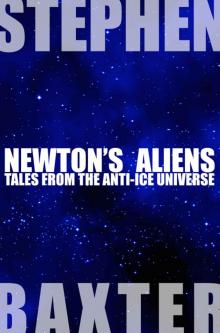 Newton's Aliens: Tales From the Anti-Ice Universe
Newton's Aliens: Tales From the Anti-Ice Universe Exultant
Exultant Manifold: Origin
Manifold: Origin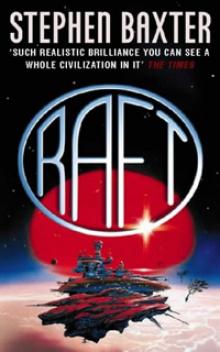 Raft xs-1
Raft xs-1 Bronze Summer n-2
Bronze Summer n-2 Transcendent
Transcendent Stone Spring
Stone Spring Coalescent
Coalescent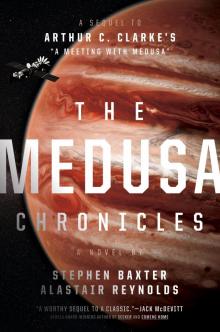 The Medusa Chronicles
The Medusa Chronicles Origin m-3
Origin m-3 Silverhair tm-1
Silverhair tm-1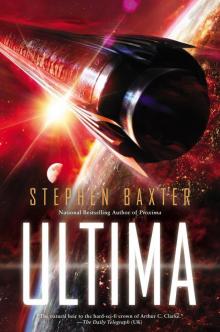 Ultima
Ultima Voyage n-1
Voyage n-1 Xeelee: Endurance
Xeelee: Endurance Space m-2
Space m-2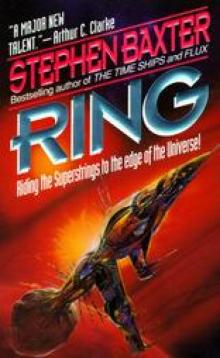 Ring xs-4
Ring xs-4 Raft
Raft Xeelee: Vengeance
Xeelee: Vengeance Iron Winter n-3
Iron Winter n-3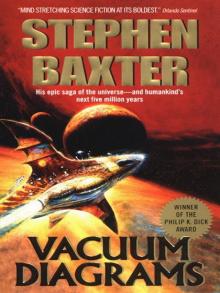 Vacuum Diagrams
Vacuum Diagrams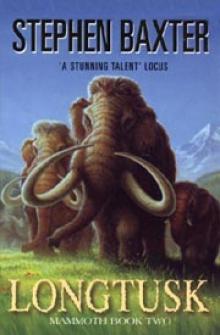 Longtusk tm-2
Longtusk tm-2 Proxima
Proxima Evolution
Evolution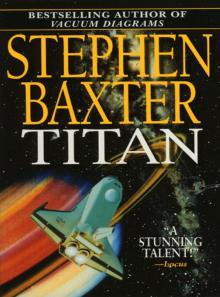 Titan
Titan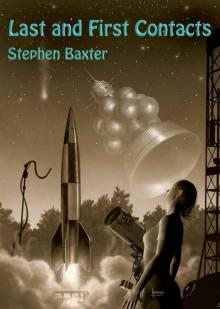 Last and First Contacts (Imaginings)
Last and First Contacts (Imaginings) Emperor
Emperor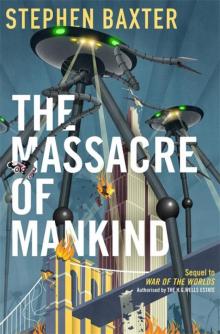 The Massacre of Mankind
The Massacre of Mankind Starfall
Starfall Doctor Who - The Wheel of Ice
Doctor Who - The Wheel of Ice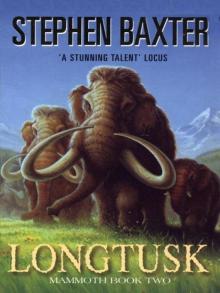 Longtusk
Longtusk Silverhair
Silverhair Conqueror tt-2
Conqueror tt-2 Flood
Flood Flood f-1
Flood f-1 Emperor tt-1
Emperor tt-1 Moonseed
Moonseed Conqueror
Conqueror Timelike Infinity xs-2
Timelike Infinity xs-2 The Ghost Pit
The Ghost Pit Xeelee: An Omnibus: Raft, Timelike Infinity, Flux, Ring
Xeelee: An Omnibus: Raft, Timelike Infinity, Flux, Ring Weaver tt-4
Weaver tt-4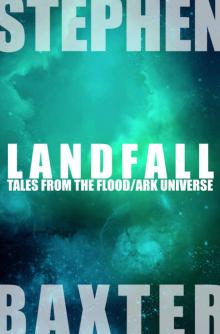 Landfall: Tales From the Flood/Ark Universe
Landfall: Tales From the Flood/Ark Universe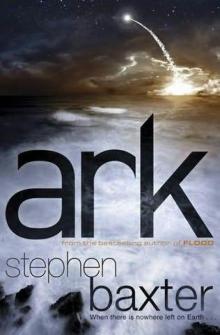 Ark
Ark Emperor: Time’s Tapestry Book One
Emperor: Time’s Tapestry Book One Space
Space Icebones
Icebones Manifold: Space
Manifold: Space Navigator
Navigator Obelisk
Obelisk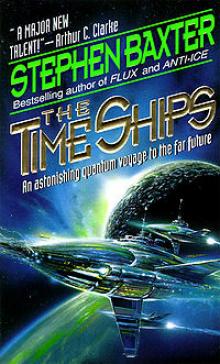 The Time Ships
The Time Ships Bronze Summer
Bronze Summer Resplendent
Resplendent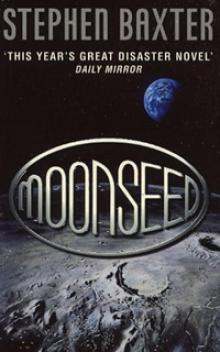 Moonseed n-3
Moonseed n-3 Flux xs-3
Flux xs-3 Transcendent dc-3
Transcendent dc-3 Icebones tm-3
Icebones tm-3 Phase Space
Phase Space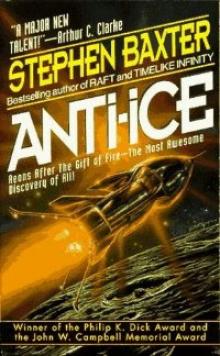 Anti-Ice
Anti-Ice Weaver
Weaver Voyage
Voyage Time m-1
Time m-1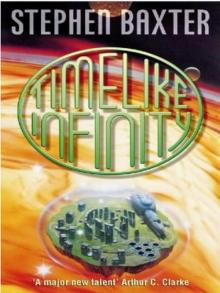 Timelike Infinity
Timelike Infinity Exultant dc-2
Exultant dc-2 Coalescent dc-1
Coalescent dc-1 Navigator tt-3
Navigator tt-3